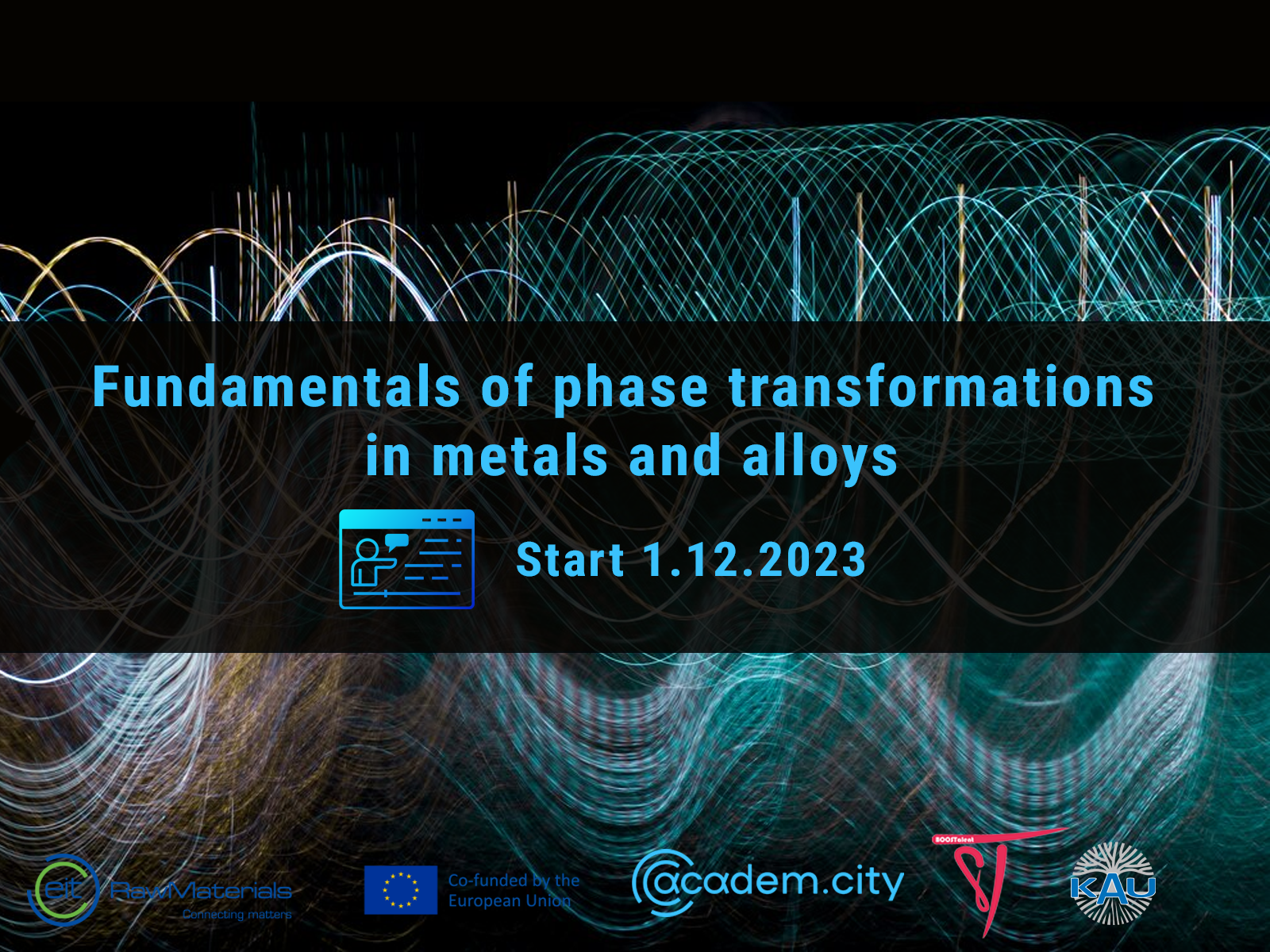

Fundamentals of phase transformations in metals and alloys
Level: intermediate
Language: Ukrainian
Format: online
Course duration: 15 hours
Target audience: Undergraduate and graduate students majoring in materials science and mechanical engineering.
Accessibility: self-study based on video and text materials on the platform eduportal.kau.org.ua, passing the final test;
Lecturer: Doctor of Technical Sciences, Valerii Kostin, Leading Researcher at the E.O. Paton Institute of Electric Welding of the National Academy of Sciences of Ukraine (Metal Science and Heat Treatment of Metals), Associate Professor of the Department of Applied Physics and Materials Science of the Kyiv Polytechnic University
Required knowledge:
Physics, mathematics, crystal structure of metals and alloys, heat treatment of metals and alloys, methods of studying the properties of alloys.
Skills acquired:
Students gain basic knowledge about the conditions of crystallization of alloys, factors affecting crystallization (size of the critical nucleus, degree of supercooling, rate of nucleation of crystallization centers and crystal growth rate), features of the nucleation of homogeneous and heterogeneous phases. Determine the role of diffusion on phase transformation processes. Determine the influence of dislocation structure and dispersed inclusions on the features of phase transformations. Determine the structure of the ingot and weld and characteristic zones.
The basic concepts of metal theory (metal, alloy, mechanical mixture, solid and liquid solution, chemical compound) will be solved. Know the Gibbs rule of phases and types of solid solutions (immersion, substitution, and subtraction solutions). The principles of constructing a state diagram, the main lines on the state diagram (liquidus, solidus, conodus). Know the difference between different state diagrams, use the rule of levers (segments) to determine the composition and number of phases, know the general types of state diagrams (eutectic, peritectic, monotectic, eutectoid, peritectoid) and the influence of the state diagram on the properties of alloys. Be able to identify the main phases (ferrite, austenite, graphite, cementite) on the diagram of zalizo-carbon. Distinguish between diagrams of nonequilibrium transformations - isothermal and thermokinetic, steel microstructure, know the effect of carbon and alloying elements on steel microstructure
You can learn more about the course and the teacher in this video
The course is free of charge. After completing the course, all participants who complete the program and pass the test will receive certificates with ECTS credits (0.5 credits).